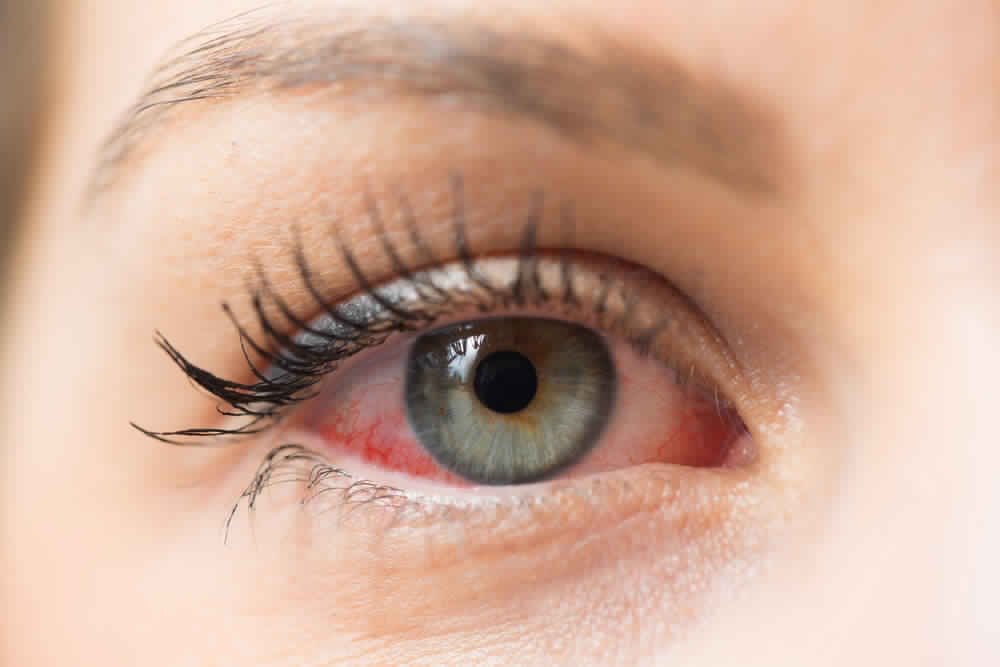Blue light is the visible light spectrum with the shortest wavelength and highest energy, and similar to ultraviolet rays, blue light has both benefits and dangers. Here are seven important things you should know about blue light:
Blue light is the visible light spectrum with the shortest wavelength and highest energy, and similar to ultraviolet rays, blue light has both benefits and dangers. Here are seven important things you should know about blue light:
1. Blue light is everywhere
Sunlight is the main source of blue light, and being outdoors during daylight is where most of us get maximum exposure to blue light. But there are also many man-made, indoor sources of blue light, including fluorescent and LED lighting and flat-screen televisions.
Most notably, the display screens of computers, electronic notebooks, smartphones and other digital devices emit significant amounts of blue light.
The amount of HEV light these devices emit is only a fraction of that emitted by the sun. But the amount of time people spend using these devices and the proximity of these screens to the user’s eyes, is a cause of concern for many eye doctors and other health care professionals.
2. HEV light rays make the sky look blue
The short-wavelength, high-energy light rays on the blue end of the visible light spectrum scatter more easily than other visible light rays when they strike air and water molecules in the atmosphere. The higher degree of scattering of these rays makes the cloudless sky look blue.
3. The eye is not very good at blocking blue light
Anterior structures of the adult human eye (the cornea and lens) are very effective at blocking UV rays from reaching the light-sensitive retina at the back of the eyeball. In fact, less than one percent of UV radiation from the sun reaches the retina, if you aren’t wearing sunglasses.
(Remember, that sunglasses that block 100 percent of UV are essential to protect these and other parts of the eye from damage that could lead to cataracts and even cancer.)
On the other hand, virtually all visible blue light passes through the cornea and lens and reaches the retina.
4. Blue light exposure may increase the risk of macular degeneration
The fact that blue light penetrates all the way to the retina (the inner lining of the back of the eye) is important, because laboratory studies have shown that too much exposure to blue light can damage light-sensitive cells in the retina.
This causes changes that resemble those of macular degeneration, which can lead to permanent vision loss.
Many eye care providers are concerned that the added blue light exposure from computer screens, smartphones and other digital devices might increase a person’s risk of macular degeneration later in life. More research is needed, though, to determine how much natural and man-made blue light is “too much blue light” for the retina.
5. Blue light contributes to digital eye strain
Because short-wavelength, high energy blue light scatters more easily than other visible light, it is not as easily focused. When you’re looking at computer screens and other digital devices that emit significant amounts of blue light, this unfocused visual “noise” reduces contrast and can contribute to digital eye strain.
Research has shown that lenses that block blue light with wavelengths less than 450 nm (blue-violet light) increase contrast significantly. Therefore, computer glasses with yellow-tinted lenses may increase comfort when you’re viewing digital devices for extended periods of time.
6. Blue light protection may be even more important after cataract surgery
If you have cataracts and are about to have cataract surgery, ask your surgeon what type of intraocular lens (IOL) will be used to replace your cloudy natural lens, and how much blue light protection the IOL provides.
After cataract surgery you might benefit from eyeglasses that have lenses with a special blue light filter — especially if you spend long hours in front of a computer screen or using other digital devices.
7. Not all blue light is bad
So, is all blue light bad for you?
It’s well documented that some blue light exposure is essential for good health. Research has shown that high-energy visible light boosts alertness, helps memory and cognitive function and elevates mood.
In fact, light therapy is used to treat seasonal effective disorder — which is a type of depression that’s related to changes in seasons. Its symptoms usually begin in autumn and continue through winter. The light sources for this therapy emit bright white light that contains a significant amount of HEV blue light rays.
Also, blue light is very important in regulating circadian rhythm — the body’s natural wakefulness and sleep cycle.
Exposure to blue light during daytime hours helps maintain a healthful circadian rhythm. But too much blue light late at night (reading a novel on a tablet computer or e-reader at bedtime, for example) can disrupt this cycle, potentially causing sleepless nights and daytime fatigue.
Blue light filters and protective eyewear
If you are using your phone constantly — especially if you use it primarily for texting, emailing and web browsing — a convenient way to reduce your blue light exposure is to use a blue light filter.
Digital electronic devices emit blue light that can cause eye strain and may lead to eye problems over time.
These filters are available for smartphones, tablets, and computer screens and prevent significant amounts of blue light emitted from these devices from reaching your eyes without affecting the visibility of the display. Some are made with thin tempered glass that also protects your device’s screen from scratches. As mentioned above, computer glasses also can be helpful to reduce blue light exposure from computers and other digital devices.
Also, a number of lens manufacturers have introduced special glare-reducing anti-reflective coatings that also block blue light from both natural sunlight and digital devices.
Ask your eye doctor or optician about which type of vision correction and lens features best suit your needs for viewing your computer and other digital devices and protecting your eyes from blue light.
Blue light filters and protective eyewear
If you are using your phone constantly — especially if you use it primarily for texting, emailing and web browsing — a convenient way to reduce your blue light exposure is to use a blue light filter.
Digital electronic devices emit blue light that can cause eye strain and may lead to eye problems over time.
These filters are available for smartphones, tablets, and computer screens and prevent significant amounts of blue light emitted from these devices from reaching your eyes without affecting the visibility of the display. Some are made with thin tempered glass that also protects your device’s screen from scratches. As mentioned above, computer glasses also can be helpful to reduce blue light exposure from computers and other digital devices.
Also, a number of lens manufacturers have introduced special glare-reducing anti-reflective coatings that also block blue light from both natural sunlight and digital devices.
Ask your eye doctor or optician about which type of vision correction and lens features best suit your needs for viewing your computer and other digital devices and protecting your eyes from blue light.






